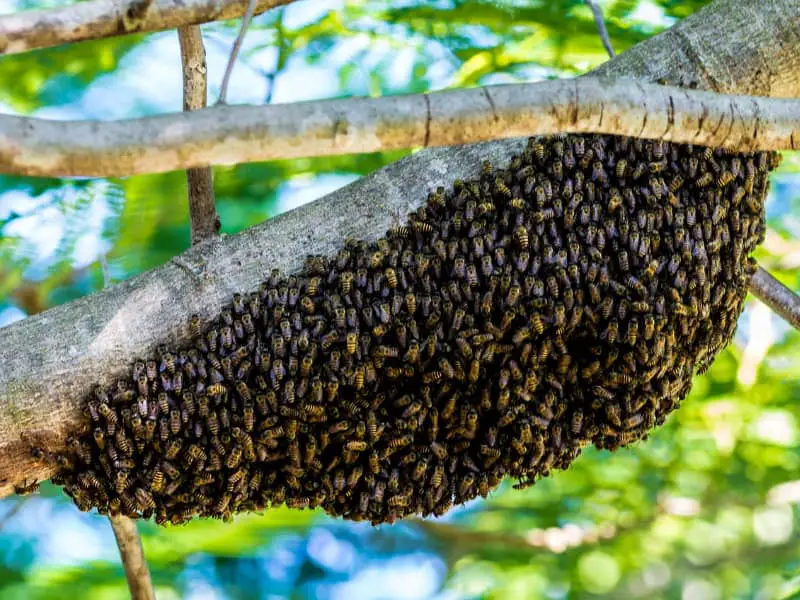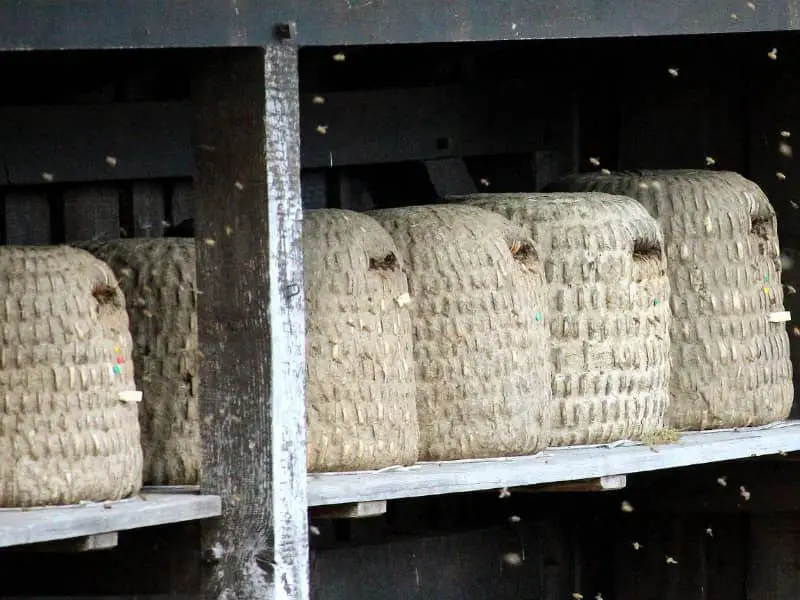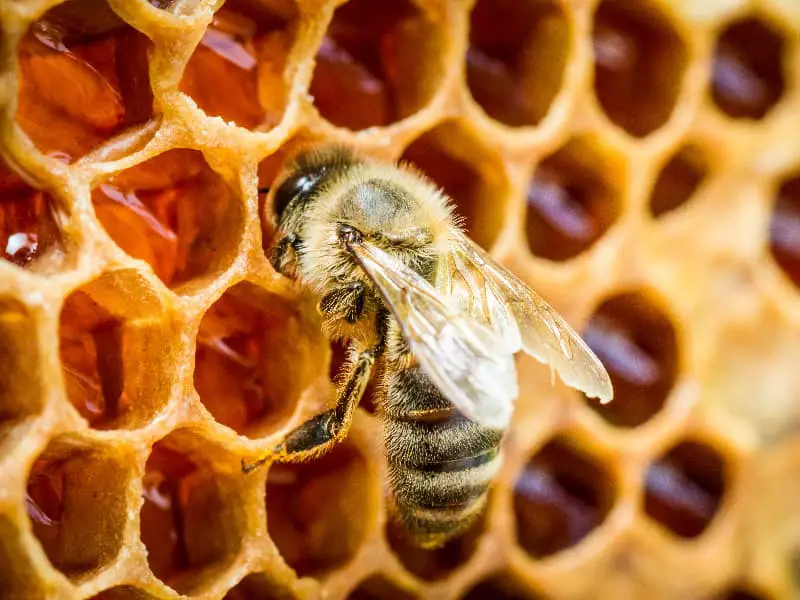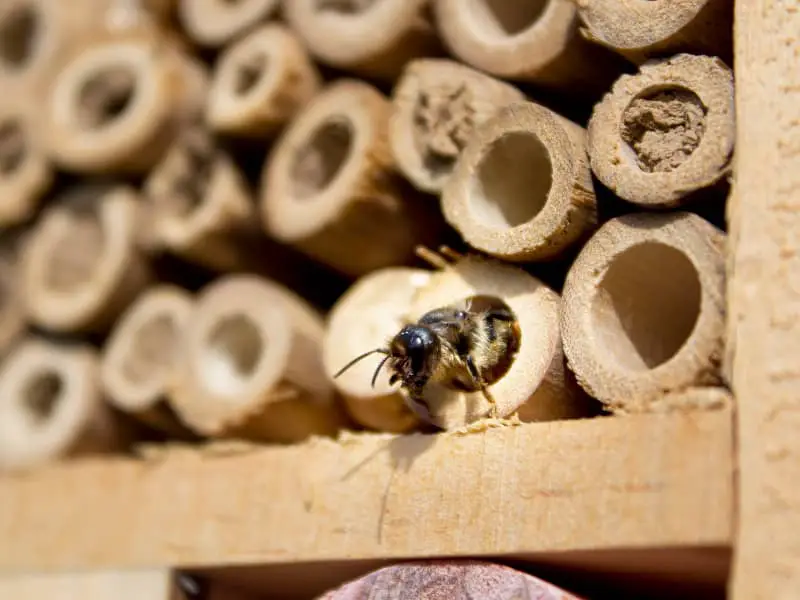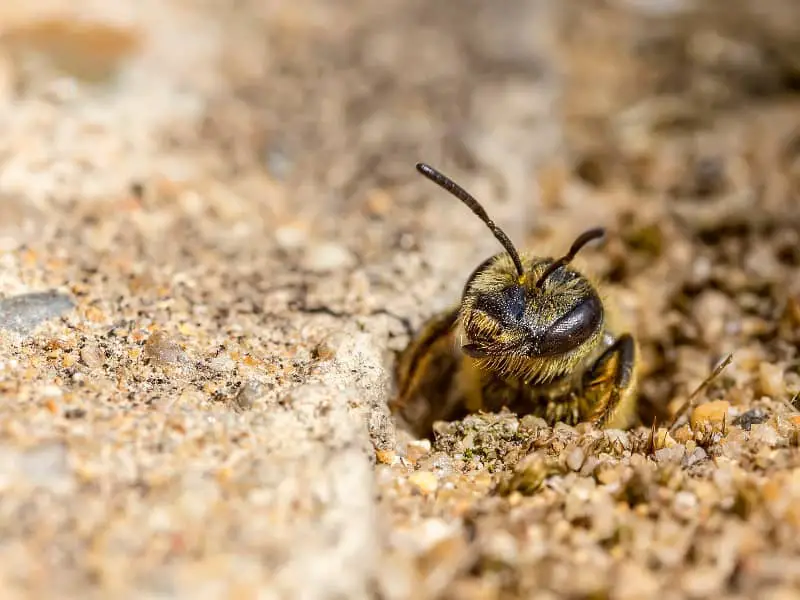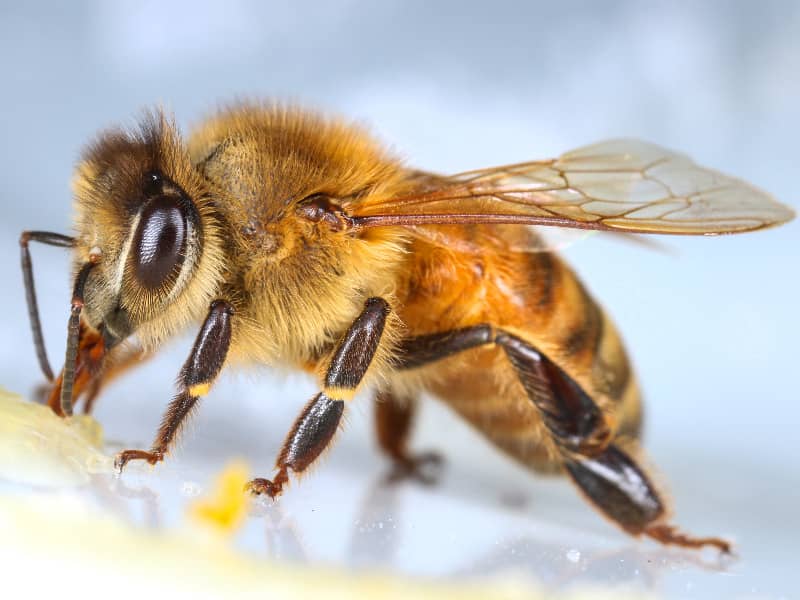
How far do bees fly?
You're here because you're wondering, "How far do bees fly?" This question may seem simple at first glance, but it is actually a complex topic with multiple aspects ranging from bee biology to environmental factors to human activities. In this blog post, we will take an in-depth look at the exciting world of bees and their flight distances.
- How far do bees fly?
- Importance of the theme: "How far do bees fly?"
- How far do bees fly? - Basics of bee biology
- Species of bees and their flight distances
- Factors influencing the flight distance
- How far do bees fly? - Energetics of the bee flight
- How far do bees fly? - Daily flight patterns
- How far do bees fly reproductively?
- What do scientific studies say?
- Conclusion: How far do bees fly?
Importance of the theme: "How far do bees fly?"
The flight distance of a bee has a significant impact on our ecosystem. Bees are not only honey producers, but also key players in the pollination of plants. Without bees, food production would be seriously threatened. Therefore, it is important to understand how far bees fly in order to draw conclusions about their way of life, their interactions with the environment and ultimately human activities.
Why the question: "How far do bees fly?" is important
You may wonder why it is so important to know the flight distance of bees. The answer is complex. For one thing, flight distance provides information about the range of pollination that an individual bee can perform. For another, knowing the flight distance of bees can help us develop more effective conservation measures for these important insects. Likewise, by understanding the flight distance of bees, we can optimize our own agricultural practices.
How far do bees fly? - Basics of bee biology
Before we dive into the details of how bees fly, it is useful to understand some basic biology of these fascinating insects. The biology of bees is key to understanding their capabilities and limitations in terms of flight.
Life cycle of a bee
The life cycle of a bee is a fascinating process that can be divided into four main phases: Egg, larva, pupa and adult bee. The length of the life cycle can vary depending on the bee species, but has a direct impact on flight distance. Young bees spend their first days of life in the hive and are thus tied to a fixed location. Only as adult bees do they begin to explore their environment and collect nectar as well as pollen. Their flight abilities develop over the course of their lives and can be influenced by various factors such as nutrition and general health.
Anatomy and flying ability
The bee's anatomy is specially designed for flying. Their wings are relatively small, compared to their body, but extremely efficient. Their musculature allows fast and agile movements, which are crucial for collecting nectar and pollen and for communicating with other bees.
The ability to fly is thus directly linked to their anatomy, and this in turn influences the maximum flight distance. For example, bumblebees are heavier and have a different wing structure than honeybees, which affects their flight distance and speed.
Communication behavior
Bees communicate with each other in amazing ways, especially when it comes to finding food sources. They use the so-called "bee dance" to communicate to other bees in the hive the way to flowers and other food sources. This communication behavior plays an important role in determining flight distance.
When a bee has discovered a rich food source, it will fly back to the hive and communicate the position to the other bees through the dance. This promotes the efficiency of foraging and extends the range of the entire colony of bees.
Species of bees and their flight distances
There are a variety of bee species, and each has its own characteristic flight distances. In this section, we will focus on the differences between honey bees, wild bees and bumblebees, as they are among the best known and most studied bee species.
Honey bees
Honey bees are probably the best known species of bee and play a crucial role in agriculture through their pollination abilities. On average, honey bees fly a distance of about 5 km to collect nectar and pollen.
However, this is highly dependent on various factors such as the presence of food sources and weather conditions. There are also reports of honey bees traveling much further distances, but this is the exception rather than the rule.
Wild bees
Wild bees are a very diverse group, with many different flight patterns and distances. Some species, like the mason bee, are more sedentary and fly only a few hundred meters from their nest. Others, like the long-horned bee, can fly several miles. Wild bees are often specialized pollinators for specific plants and can therefore purposefully travel long distances to reach them.
Bumblebees
Bumblebees are known for their robust constitution and ability to fly in cooler temperatures. Their flight distance varies depending on species and circumstances. Bumblebees can travel 2 km or more, especially when it comes to finding specific food sources or nesting sites. Their robust body structure allows them to fly in adverse weather conditions, which extends their flight distance compared to bee species.
Factors influencing the flight distance
The flight distance of bees is determined not only by their biology and species, but also by a variety of external factors. These include weather conditions, topography and food availability. In the following, we will look at these factors in more detail.
Weather conditions
Weather plays a crucial role in determining the flight distance of bees. Strong winds, rain, and low temperatures can significantly limit a bee's ability to fly far. Bees prefer warm, but not hot, weather for their flights. Excessively high temperatures can also be problematic, as bees then run the risk of dehydration.
In addition to temperature, light conditions also have an influence; many bee species prefer sunny conditions for their activities. Overall, optimal weather conditions for bees are mild and dry with little wind.
Topography
The topography of the terrain can also have a significant impact on flight distance. Hilly or mountainous terrain can, among other things, increase the amount of energy required for flight and thus reduce the possible flight distance.
However, flat landscapes and open fields can allow bees to fly more efficiently and thus reach more distant food sources. Obstacles such as buildings or dense vegetation can also limit flight distance by making navigation more difficult.
Food availability
The availability of food sources is another crucial factor influencing the flight distance of bees. When nectar and pollen are abundant near the hive, the need for long flights is reduced. On the contrary, in areas where food sources are scarce, bees have to travel longer distances to find food.
This can be particularly relevant for honey bees, which need to collect large amounts of nectar for honey production.

How far do bees fly? - Energetics of the bee flight
Flying is an energy-intensive activity for bees, and there are a number of factors that need to be considered in the energy balance of such a journey. In this section, we look at the calories consumed during flying, the main energy sources, and the breaks and recovery periods that bees take.
Calorie consumption
The calorie consumption of a bee during flight is amazingly high. To provide the energy for their activities, bees must efficiently convert food such as nectar or honey into energy. Calorie consumption can vary depending on flight duration, speed, and total miles traveled. Studies have shown that the energy cost of flying can be significant for bees, which determines the limits of their flight distance.
Energy suppliers
The main energy supplier for flying bees is the sugar from the nectar they collect or the honey stored in the hive. This sugar is converted into energy that is supplied to the muscles during flight. Amino acids from pollen can also play a role, especially in post-flight regeneration. The bees' efficient metabolism enables them to use these energy reserves quickly, which is crucial for maintaining the ability to fly over longer distances.
Breaks and recovery periods
Breaks and recovery periods are also important for the energetic balance of the bee's flight. Bees do not usually make long, continuous flights, but take short breaks to conserve energy and replenish their reserves. This is especially important when they have to travel long distances. These pauses can also be used for orientation and to assess food quality. Thus, pauses and rest are not only important for regeneration, but also for strategic planning of foraging.
How far do bees fly? - Daily flight patterns
Bees have characteristic daily flight patterns based on several criteria. In this section, we consider diurnal activity, changing flight destinations, and the ratio of routine to exploration in bees' daily flight patterns.
Daytime activity
Bees are predominantly diurnal insects, which means that their flight activity is usually limited to daytime. However, the time of day when bees are most active depends on the specific species and the prevailing weather conditions. For example, many bee species are most active in the morning and afternoon hours when temperatures are moderate and light conditions are good.
Changing destinations
During the course of a day, the bees' flight goals may vary. In the morning hours, they might focus on collecting pollen, while in the afternoon they are more likely to collect nectar. This is partly an adaptation to the availability of these resources, which changes depending on when the plants around them are in bloom. In addition, factors such as social behavior in the hive or current food requirements may influence the destination of bee flights.
Routine vs. exploration
Bees show an interesting balance between routine and exploration in their flight patterns. Some bees, especially honey bees, tend to return regularly to the same food sources once they have discovered them. This is referred to as routine flight behavior. On the other hand, bees are also explorers, constantly searching for new food sources. This exploration allows them to adapt to changing environmental conditions and maximize the efficiency of their foraging.
How far do bees fly reproductively?
In addition to foraging and other daily activities, flights for reproductive purposes are an important aspect of bees' lives. In this section we focus on swarming, queen flight and drone flight as key events related to this.
Swarm
Swarming is a phenomenon in which a large part of a hive, led by a queen, moves out to establish a new hive. This is one of the main methods of dispersal and reproduction of honey bees. The distance of flight in a swarm can vary, but often they fly only a few miles. Swarming is a highly organized activity in which bees work closely together. It requires significant amounts of energy and is highly dependent on weather conditions.
Queen flight
The queen flight, also called the nuptial flight, is a crucial moment in the life of a queen bee. During this flight, she mates with several drones in the air. The distance of this flight can vary, but the queen often flies several kilometers to ensure that she mates with drones from other hives. This is important for the genetic diversity of the future hive.
Drone flight
Drones, the male bees, have the specific task of mating with a queen. Their flight behavior is designed to meet a queen in the air, and they often congregate in special "drone gathering areas." The flight distance of drones can be considerable, as they often accompany the queen on her nuptial flight. After mating, the drones die, as their only task in life is completed.
What do scientific studies say?
Scientific research plays a crucial role in deepening our understanding of bee flight distances. In this section, we take a look at the different methods used to measure distance, what research says about average flight distances, and what particular findings have been made.
Distance measurement methods
There are several methods for measuring the flight distance of bees. One of the most common is radio telemetry, in which bees are fitted with small transmitters to track their movements. Other methods include marking and recognizing bees or observing flight behavior using video recordings. Each method has its own advantages and disadvantages in terms of accuracy, cost-effectiveness, and applicability to different bee species.
Average flight distances
Scientific studies have found a wide range of flight distances for different bee species. Honey bees, for example, can fly up to 10 kilometers, while many wild bee species travel shorter distances of less than one kilometer. These distances can also be strongly influenced by environmental factors such as weather conditions and food availability.
Special findings
Some studies have provided remarkable insights that expand our understanding of bee flight. For example, research has shown that bees are able to optimize their flight routes to conserve energy. Other interesting research findings involve social communication between bees, which they use to share information about food sources and optimal flight routes.
Conclusion: How far do bees fly?
In this blog post, we have taken an in-depth look at how far bees can fly. Now we summarize the most important findings, take a look at still unanswered questions and give an outlook on further research in this area.
Most important findings
We have learned that bee flight distances are influenced by a variety of factors, including weather conditions, topography, and food availability. Similarly, we have seen that reproductive activities such as swarming or queen flight have their own dynamics and distances. Scientific studies provide a valuable data base on this, showing that flight distances can vary greatly depending on species and circumstances.
Unresolved issues
Despite the wealth of information, there are still many unanswered questions. For example, it is not yet fully understood how bees optimize their flight routes or what genetic factors influence flight capacity. The effects of environmental changes on flight patterns are also an area that requires further research.
Outlook for further research
The future promises exciting developments in research on bees and their flight distances. Improved methods of distance measurement and advanced technologies could help to collect even more precise data. This would not only be of interest to science, but also to beekeeping and conservation to better serve bees in a changing world.
This concludes our in-depth look at the question "How far do bees fly?".
Author

-
Garden animal - A life with nature
Welcome to my animal blog! My name is Dirk and I am happy to take you on my journey through the fascinating world of animals and gardening.
Born 54 years ago, I have had an insatiable curiosity for the animal world around me since childhood. Although I have moved professionally in other industries, my true passion has always been animals and nature. It is remarkable how a small garden has become such an important part of my life.
Many of my fondest memories are associated with the animals that share our home. Whether it's the curious squirrels that scurry across the trees in the morning, the colorful variety of birds that visit our feeders, or the busy bees and butterflies that pollinate our flowers, every moment with them is invaluable to me.
This blog is my contribution to share my experiences, discoveries and insights with like-minded people. Here I will share stories of unforgettable encounters with animals, give tips on gardening and creating wildlife-friendly habitats, and take you on my journeys through nature.
Thank you so much for being here!
Cordial,
Dirk aka garden animal
Last posts
- 27. February 2024PetsVeganes Hundefutter – Grün und Gesund?
- 18. January 2024ChickensOregano für Hühner
- November 27, 2023HamsterDiurnal hamsters
- November 24, 2023HamsterHamster hammock

